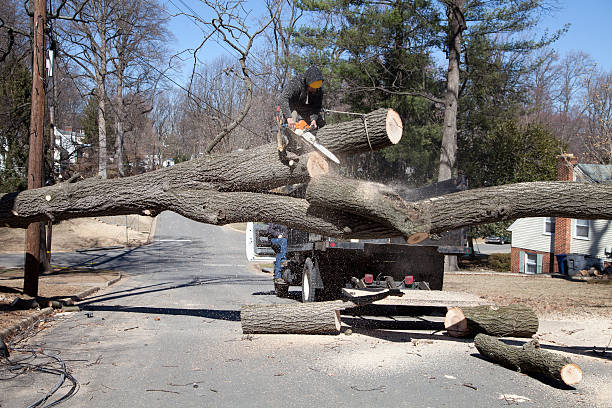When considering the removal of trees, whether for commercial or residential purposes, it is essential to acknowledge the distinct factors that set these two practices apart. From the specialized equipment required to the intricate permit regulations that need to be navigated, the disparities between commercial and residential tree removal are vast.
Safety considerations, cost implications, and the environmental footprint also play a pivotal role in distinguishing these processes. Understanding these differences is crucial for stakeholders involved in completion of tree removal projects to ensure compliance and efficiency.
Equipment Differences
When comparing commercial and residential tree removal, one significant distinction is the equipment utilized. Commercial tree removal often requires larger and more specialized machinery due to the scale and complexity of the projects involved.
Commercial operations frequently utilize heavy-duty equipment such as cranes, cherry pickers, stump grinders, and wood chippers to handle large trees and extensive clearing jobs efficiently. These powerful tools are essential for safely tackling trees near buildings, power lines, or other structures.
On the other hand, residential tree removal typically involves smaller equipment like chainsaws, handsaws, and smaller wood chippers. The equipment is more compact and maneuverable since residential projects usually deal with smaller trees and less intricate landscapes.
This allows arborists to navigate through tight spaces and carefully remove trees without causing damage to surrounding property. While the equipment scale differs between commercial and residential tree removal, both require skilled professionals to operate them safely and effectively.
Permit Requirements
In tree removal operations, one crucial aspect that demands attention is the acquisition of necessary permits, a process that varies significantly between commercial and residential projects. Permits may only sometimes be required for residential tree removal, especially for trees on private property that do not risk public safety or interfere with utility lines.
However, some municipalities and homeowners’ associations may have regulations requiring permits for tree removal exceeding a certain size or species.
On the other hand, commercial tree removal almost always requires permits due to the larger scale of operations and potential impact on the surrounding environment. These permits often involve detailed assessments of the tree’s health, location, and the planned removal method to ensure minimal disruption to the ecosystem.
Additionally, commercial projects may need to comply with federal, state, and local regulations, adding another layer of complexity to the permitting process for commercial tree removal. Properly navigating these permit requirements is essential to avoid legal issues and ensure tree removal projects’ safe and efficient completion.
Safety Considerations
Safety considerations play a paramount role in tree removal operations, ensuring the protection of workers, bystanders, and property throughout the process. Before commencing any tree removal, commercial and residential settings necessitate a comprehensive assessment of the work area.
This evaluation helps identify potential hazards, such as nearby power lines, structures, or uneven terrain, that could pose risks during removal. Adherence to safety protocols, including using personal protective equipment (PPE) like helmets, gloves, and safety glasses, is imperative to mitigate accidents and injuries.
In commercial tree removal, additional safety measures may be required due to the scale of the operation. Large commercial projects often involve heavy machinery like cranes or cherry pickers, necessitating specialized operator training.
Moreover, in commercial settings, more bystanders or workers might be near the removal site, heightening the importance of clear communication and coordination to ensure everyone’s safety. Overall, prioritizing safety protects individuals involved and minimizes the likelihood of property damage or liabilities.

